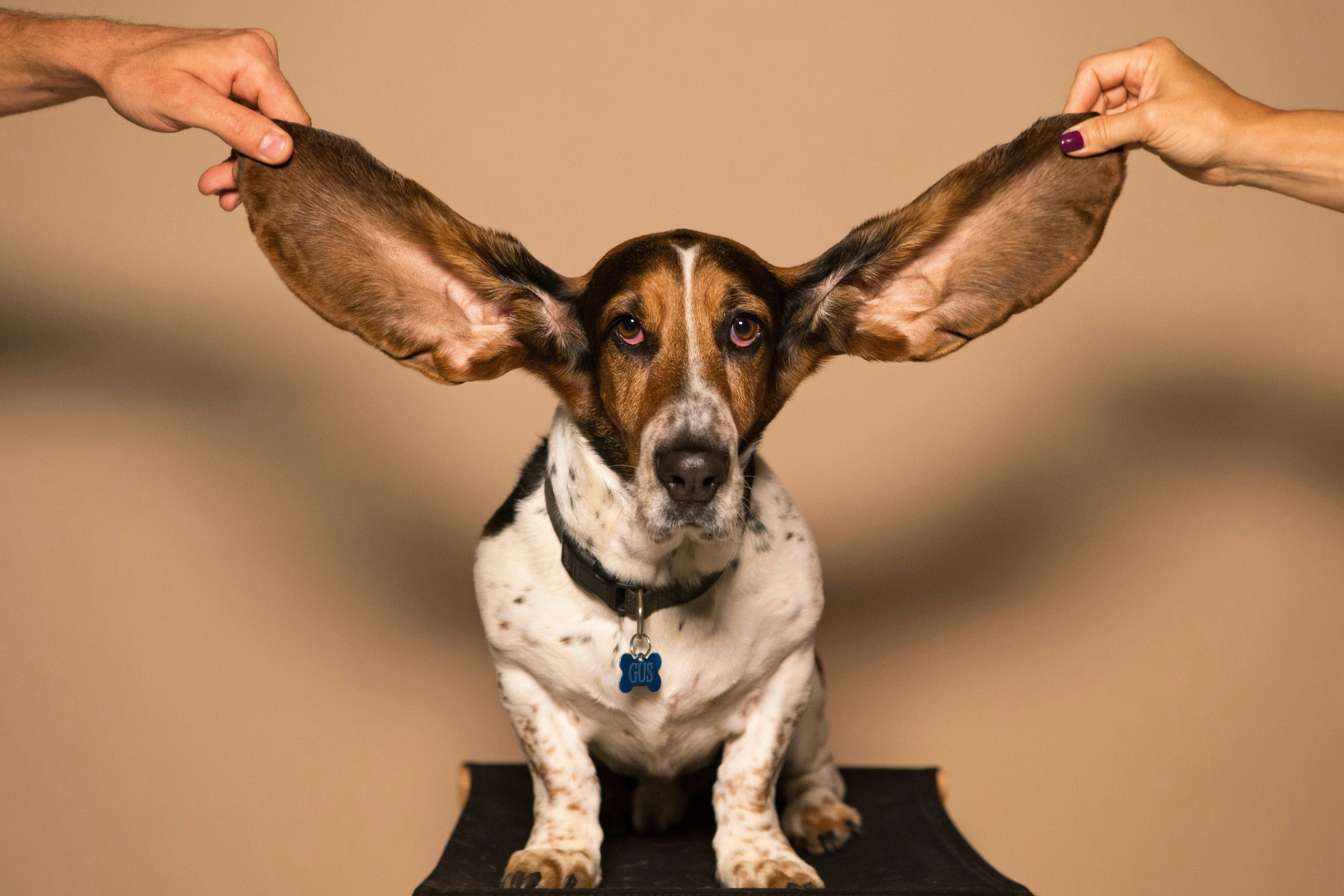Seizures can be a frightening experience for any pet owner, especially when they happen unexpectedly. Whether your dog or cat collapses, convulses, or simply acts abnormally, understanding what seizures are, what causes them, and how to respond can make a major difference in both your pet’s well-being and your peace of mind.
What Are Seizures?
A seizure is a sudden, uncontrolled burst of electrical activity in the brain. It typically begins in one area (called the seizure focus) and spreads to other regions. This abnormal activity can cause changes in behavior, movement, sensation, or consciousness, and may present differently across pets.
While many people picture a seizure as dramatic convulsions, seizures can appear in various forms depending on the type and the individual pet. Classically, seizures appear as convulsions defined by the body stiffening and rhythmic jerking and may be accompanied by other signs such as drooling, urination, or biting. However, any involuntary, abnormal behavior could potentially be classified as a seizure.
Types of Seizures in Pets
Here are the main types of seizures in pets:
- Generalized (Grand Mal) Seizures: This is the most common type in pets and involves the entire body. You'll see tonic (stiffening) and clonic (jerking) movements, often with loss of consciousness and inadvertent urination or defecation.
- Focal (Partial or Petit Mal) Seizures: These affect only part of the body. Consciousness may or may not be impaired. A common example is a 'chewing gum' fit, where the pet appears to be chewing with no stimulus, often with frothing at the mouth.
- Psychomotor Seizures: These are a type of focal seizure that manifests as odd, repetitive behaviors or hallucinations rather than convulsions. Pets may appear disoriented, stare into space, or show signs of aggression or fear. They may even stop recognizing family members. A classic example of a psychomotor seizure is fly-biting, where a pet snaps at the air when nothing is there.
How Do I Know If My Pet Had a Seizure?
While generalized seizures are easy to spot, other types can be subtle or go unwitnessed. The good news is that most of the time, pets that have unwitnessed seizures are not in imminent danger. If you observe an unusual episode, try to video it but only if your pet is in a safe environment. Videos can be incredibly helpful for your veterinarian when making a diagnosis.
Seizure vs. Fainting (Syncope): Fainting from heart-related issues can sometimes be confused with seizures. Here are key differences:
- Before the event: Seizures are often preceded by an "aura," or subtle behavioral changes like clinginess or withdrawal. This is also known as the pre-ictal phase, which comes from the Latin word “ictus”, meaning “a stroke” or “a blow”. Fainting is usually triggered by excitement, exercise, barking, or eating.
- After the event: Seizures are followed by a post-ictal phase where pets may be confused, wobbly, or temporarily blind for minutes to hours. In contrast, pets who faint usually recover within seconds and act completely normal.
Common Causes of Seizures in Pets
Seizures may stem from a variety of conditions:
- Idiopathic epilepsy: The most common cause in dogs, usually diagnosed between 6 months and 6 years old when no underlying cause is found.
- Toxins: Ingestion of certain plants, chemicals, or household substances.
- Metabolic disorders: Conditions like low blood sugar (hypoglycemia), kidney or liver disease, or electrolyte imbalances.
- Infections: Inflammation or infection of the brain (e.g., meningitis, encephalitis, parasites). These are more common in pets under 6 months.
- Brain tumors or trauma: Often suspected in pets over 8 years old presenting with first-time seizures.
- Genetic predisposition: Certain breeds are more prone to seizure disorders.
Recognizing the Signs of a Seizure
Seizure symptoms may include:
- Muscle stiffness or rhythmic jerking
- Collapse or paralysis
- Drooling or foaming at the mouth
- Paddling limbs or tongue chewing
- Loss of consciousness
- Unusual behavior like staring, disorientation, or snapping at the air
Seizures may last from a few seconds to several minutes. Afterward, pets often enter a post-ictal phase marked by confusion, unsteadiness, or temporary blindness.
What to Do During a Seizure
Seizures may seem scary, but you can help your pet get through them safely by following these steps:
- Stay calm: Your pet is not aware of what’s happening.
- Keep them safe: Move furniture or other hazards out of the way.
- Don’t restrain them: Let the seizure run its course.
- Time the episode: Seizures lasting more than 5 minutes require immediate veterinary care.
- Comfort them after: Speak gently and offer a calm environment as they recover.
Never put your hand in your pet’s mouth during a seizure. They won’t swallow their tongue (that’s a myth) and they may unintentionally bite you.
When Is a Seizure an Emergency?
Not all seizures are emergencies, such as isolated ones, but some situations require immediate veterinary care:
- A seizure lasting longer than 5 minutes (status epilepticus)
- Multiple seizures in a row without full recovery in between (status epilepticus)
- More than three seizures in 24 hours (cluster seizures) Both status epilepticus and cluster seizures are serious and life-threatening without treatment.
What to Expect at the Vet When Your Pet Has a Seizure
When your pet experiences a first-time seizure, a visit to the veterinarian is essential for identifying the underlying cause and determining the best course of action. You can expect a comprehensive physical and neurological exam, along with a detailed review of your pet’s medical history. Your veterinarian will ask about the duration, frequency, and appearance of the seizure, as well as any recent behavioral changes, potential toxin exposure, or existing medical conditions.
During the exam, the vet will look for clues that may point to causes such as toxins, infections, metabolic disorders, or structural brain abnormalities. To gather more information, your veterinarian may recommend diagnostic tests such as blood work, urinalysis, and a biochemical profile to assess organ function and rule out systemic illness. In some cases, advanced imaging like an MRI or CT scan may be advised to evaluate for brain lesions or other structural issues.
Although a single seizure does not always indicate a chronic condition, these diagnostics help your vet determine whether your pet requires ongoing treatment or simply close monitoring. Prompt veterinary care after a seizure is critical for ruling out serious health concerns and ensuring your pet receives the right care from the start.
Seizure Treatment and Management
Treatment depends on the underlying cause and the frequency/severity of the seizures. The four most common anti-seizure medications used in dogs are:
- Phenobarbital
- Potassium bromide
- Levetiracetam (Keppra)
- Zonisamide
If one medication doesn’t offer enough control, two or more may be combined. Each has its pros and cons, and your vet will help determine the best plan based on effectiveness, ease of administration, and your pet’s health, lifestyle, and tolerance to side effects.
Routine check-ups and bloodwork are essential to monitor the effectiveness and safety of treatment.
When should you start medication?
According to a 2016 consensus from the American College of Veterinary Internal Medicine, medication should be considered if:
- Seizures occur in clusters (more than three in 24 hours)
- There are two or more isolated seizures in six months
- A single seizure lasts five minutes or longer
- The seizure or post-ictal phase is severe
- There is a visible brain lesion on MRI, CT, or X-ray
- The pet has a history of brain trauma or injury
Which Dog Breeds are Predisposed to Seizures?
While seizures can occur in any dog, including mixed breeds, certain breeds of dogs show high incidences of epilepsy linked to hereditary factors. Breeds predisposed to seizures include:
- Labrador Retriever
- Golden Retriever
- Beagle
- Border Collie
- Poodle
- German Shepherd
- Boxer
- Shetland Sheepdog
- Other breeds including Cocker Spaniels, Saint Bernards, and Siberian Huskies have also shown a predisposition to seizures
How Do Seizures Differ in Dogs vs Cats?
Both dogs and cats can experience seizures, including generalized seizures, which affect the entire brain and typically involve loss of consciousness, convulsions, and muscle rigidity, and focal seizures, which are limited to specific areas of the brain and may cause localized twitching or unusual behavior.
While the seizure types are similar across species, dogs and cats differ in how seizures present and what causes them. For instance, idiopathic epilepsy is more common in dogs, whereas cats are less frequently diagnosed with it. In felines, seizures may appear more subtle or atypical, sometimes making them harder to detect.
The prognosis and response to treatment can also differ between dogs and cats. However, the diagnostic and treatment approach is often similar, involving neurodiagnostic testing (such as MRI or cerebrospinal fluid analysis) and anticonvulsant therapy to manage seizure activity.
Recognizing early signs and seeking prompt veterinary care for seizures is critical. With appropriate diagnosis and long-term management, many pets can live comfortable, high-quality lives despite having a seizure disorder.
Do Seizures Affect The Lifespan Of A Pet?
One of the most common concerns pet parents have after a seizure diagnosis in dogs or cats is whether the condition will affect their pet’s lifespan. The answer varies depending on several factors, including the underlying cause of the seizures, how well they are controlled, and the pet’s overall health.
For many animals, especially those diagnosed with idiopathic epilepsy (seizures with no identifiable cause), the condition can often be effectively managed with anticonvulsant medications and regular veterinary care. With consistent treatment and follow-up, these pets may live normal or near-normal lifespans. Success depends on adherence to the treatment plan, timely medication adjustments, and ongoing monitoring by your veterinarian.
In contrast, if the seizures are caused by a more serious health condition such as a brain tumor, liver disease, or another systemic illness, the long-term outlook depends on how advanced the underlying disease is and how well it can be managed. In these cases, it is often the underlying condition, not the seizures themselves, that may affect lifespan.
It is also important to recognize that uncontrolled or frequent seizures can pose significant health risks. Repeated seizures may lead to cumulative brain damage, physical injuries, or a life-threatening condition called status epilepticus. This occurs when a seizure lasts longer than five minutes or when multiple seizures happen without full recovery in between. These emergencies require immediate veterinary intervention and can have a lasting impact on your pet’s quality of life.
Prompt diagnosis, consistent care, and early treatment are the best ways to improve your pet’s long-term prognosis and reduce the risks associated with seizure disorders.
Ruby Vet Can Help Manage Your Pet's Seizures
Seizures can be scary, but they don’t have to define your pet’s life. With the right knowledge and support, many pets with seizure disorders live happy, healthy lives.
If you suspect your pet has had a seizure, contact your veterinarian promptly for an evaluation and personalized care plan. And if it happens after hours, Ruby Veterinary Urgent Care is here to help, whether it’s your pet’s first seizure or part of a chronic condition.













